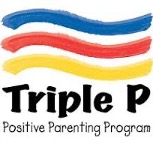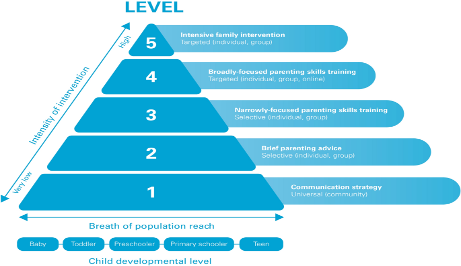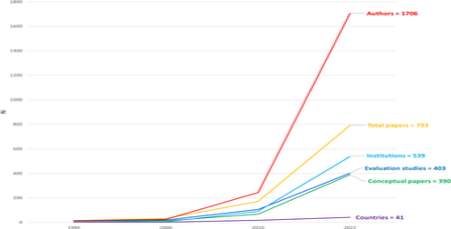By: AIF Staff
Aspen, CO – Earlier this week, as part of the Aspen Institute’s Economic Study Group, former Speaker of the House and American Idea Foundation President Paul Ryan participated in a panel discussion with Professor Jason Furman of Harvard University and Professor Melissa Kearney of Notre Dame entitled: Advancing America’s Prosperity.
The conversation touched on a variety of topics: the One, Big Beautiful Bill and its impact on the American economy in the short-term; the Trump Administration’s “America First” economic policy agenda; long-term fiscal challenges; and how public and private sector leaders can help America maintain its strategic edge on Artificial Intelligence, geopolitics, and economic competitiveness.
Excerpts of Speaker Ryan’s remarks, edited lightly for clarity, follow. Video of the discussion is accessible here.
On the pro-growth aspects of the One Big Beautiful Bill Act:
“Generally speaking, I think they got the bill right…. The good stuff, in my opinion, are the expensing provisions and the stuff that is really good pro-growth policy.
They made Section-199 permanent, which is very important for medium and small size businesses. They made full-expensing permanent, which is very good growth policy. This means that companies can write off their investments in plant and equipment in the year in which it takes place, that’s very good for productivity which leads to higher living standards. And they made the rates permanent, which reduces uncertainty.
They put other stuff in there that I wouldn’t have done, but they were more campaign promises… then they put some spending in this bill. It is spending that I think is good, but I would have preferred to put that in the regular course of the budget. The thing that Trump could never get in his first term was a full year of funding for his wall. He has got that in this…
All in all, there is a lot of good stuff, but there are things that could have done better. In my opinion, I would have had more entitlement savings to have a bigger debt reduction number coming out of this bill.”
On macroeconomics and trade policy:
“I had the distinct honor of teaching my three kids how to drive, something my wife delegated to me. All three of them started driving with two feet: One on the brake and one on the gas. We are driving the economy with two feet right now.
On the gas, we have good supply-side tax cuts and certainty. We have an unfolding regulatory relief that will unlock a lot of economic activity, but on the brake, we have these tariffs and a possible debt crisis around the corner after interest rates get cut.
On the tariffs, building on what Jason said, I would add to that [they are causing] a lot of uncertainty. What tariffs do is they raise prices on consumers, they raise prices on inputs for producers, and that lowers productivity and that means living standards go down.
I will concede – and I’ve never been a tariff guy – that the politics are pretty good. It is good, populist politics. I will concede that… but in the long-run, I think it is pretty easy to say this is not good for living standards, it’s not good for productivity, and what you end up doing is propping up American businesses and making them less competitive globally. I don’t think that is the smart way to go.”
**
“The St. Louis Federal Reserve did a study on the steel industry. It’s a very protected industry. President Trump has done these massive Section 232 tariffs on steel. For every 1,000 jobs that were saved in the steel industry, we lost 75,000 jobs in steel-consuming industries in America. For one job saved, 75 were lost, but they were spread around the country.
So, you can point to the steel-worker jobs that you saved, but it’s much harder to point to the dispersed damage that is done to the economy you. In the short-run, you can point to the victories politically and you can use populist rhetoric. In the long-run, it’s corrosive to our economic well-being, living standards and competitiveness.”
On utilizing evidence in fighting poverty:
“I really believe we can move the needle on poverty-fighting by getting out of these ideological, partisan fights that we have been in for 30 years and go to what works by using evidence and the field of economics….
We are making a difference in the War on Poverty. There is a bipartisan solution to solving poverty problems with all of this economic data and evidence that we are accruing. I wrote this bill with Patty Murray, a progressive Democrat from Washington state, so there’s nothing partisan about this. It is: Do what works and measure your success based on outcomes, not on inputs, and I think we’re making good progress on that.”
On immigration and addressing labor force needs:
“I think President Biden really screwed up and messed up the border. It’s probably the greatest reason why President Trump was elected. And so, I think it goes without saying that having a secure border is in our national interest. So, let’s put that particular issue aside.
This is a big fight in my party as well and the question is: If you let in immigrants who are lower-skilled, are you going to depress people’s wages?
This is the key political debate. I would argue, with today’s technology, you can have visas and guest-worker programs designed in such a way that you can hopefully guarantee that you are not depressing a person’s wages. Because, I have to tell you, the best cheese in the world is made in Wisconsin but we need people to help us out. We don’t have enough people to literally make the cheese and milk the cows, so we need immigrants to help us do that.
Let me put it this way: We had Phil Swagel, the head of the Congressional Budget Office, with us. They do the big, long-term, macroeconomic forecasting and their projection is that the next 30 years of GDP growth will be an average of 1.3%, which is about half the rate of what we grew in the past 30 years, and it’s basically due to one reason: Labor Supply….
With better entitlement and safety net reforms, we can maximize the labor force participation and get every able-bodied person into work. I would argue that was a key feature of the Medicaid proposal in the One Big Beautiful Bill Act. We need to do that, and even with that, our birthrates are now 1.8% and they need to be 2.4%.
The thing we have going for us in America, unlike Europe and other countries, is we have the best and the brightest and the hardest working who want to come here. We can have smart immigration reform on the legal side: high-skilled, low-skilled, and everything in between, and do it in a way that makes sure that the able-bodied young man who is not working actually works, but even after that, you’re going to still need to people. And if you do this right, you can get us back to 3% trend economic growth.”
On the future of American energy policy:
“I think Chris Wright, the current Secretary of Energy, is dialed in pretty well on a good policy with an all of the above strategy… I think nuclear is extraordinarily important. With the kind of computing power we’re going to need for AI and data centers, the only real, viable source in my opinion is nuclear. We are getting to the point where we can process fission waste, so that’s almost waste free. We have been 20 years away from fusion energy for the last 60 years, but maybe we’re actually 20 years out now. The point being you need a national strategy for that. There’s basic scientific research and the Energy Department does that. Then, you need to clear the regulatory brush.
They just built a nuclear power plant in Atlanta a year ago and that was like the first one built in 30 years. We need to build more of these. They are scalable. The small module nuclear reactors are right around the corner, so personally, I think that’s a far better bet for us than subsidizing renewables and the rest.”




